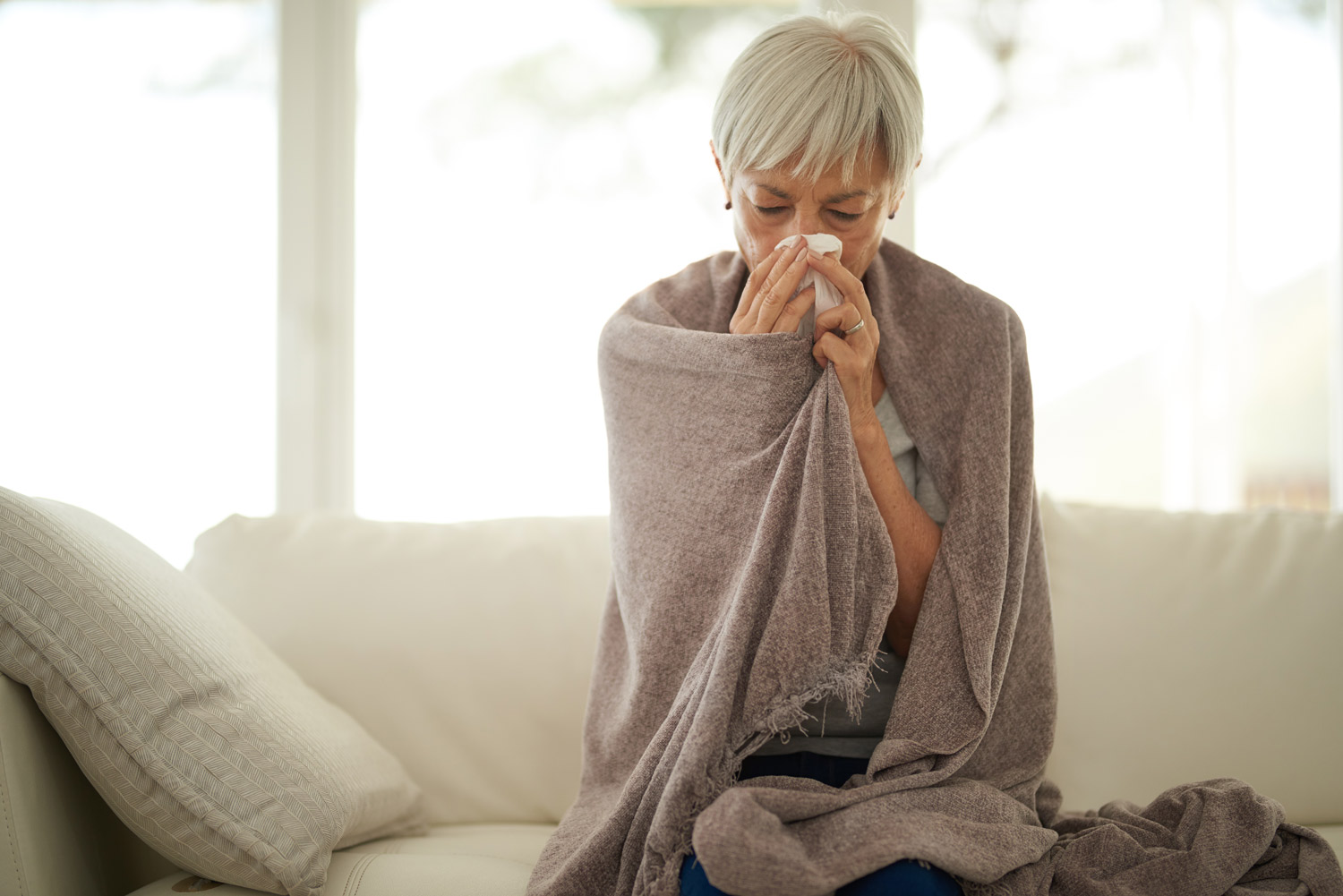As the coronavirus disease 2019 (COVID-19) situation continues to evolve, it’s important to know how to protect yourself and others if you are sick or taking care of someone who is sick.
According to the CDC, most people who get sick with COVID-19 have mild illness and are able to recover at home, though those at higher risk — including older adults and people of any age with serious underlying medical conditions, such as heart, lung and liver disease, or have a weakened immune system — should call a health care provider as soon as symptoms start.
The American Red Cross continues to closely monitor the COVID-19 pandemic and shares this latest guidance from the Centers for Disease Control and Prevention (CDC) to help prevent the spread of germs, treat symptoms, monitor for worsening conditions and carefully consider when to end home isolation.
WHAT SOMEONE SHOULD DO IF SICK
- Stay home in another room, away from other people, and use a separate bathroom if available. Restrict contact with pets and other animals, just like you would around other people. Avoid using public transportation, ride-sharing or taxis.
- Wear a facemask when around other people (e.g., sharing a room or vehicle) and before entering a health care provider’s office.
- Call a health care provider for medical advice. Older adults and people of any age with serious underlying medical conditions should call a health care provider as soon as symptoms start.
- Clean and disinfect all surfaces daily and high-touch surfaces frequently throughout the day in your sick room and designated bathroom. High-touch surfaces include phones, remote controls, counters, tabletops, doorknobs, bathroom fixtures, toilets, keyboards, tablets and bedside tables. Follow CDC guidance.
- Wash your hands often with soap and water for at least 20 seconds, especially after being in a public place, or after blowing your nose, coughing or sneezing. If soap and water are not readily available, use a hand sanitizer with at least 60% alcohol.
- Cover your coughs and sneezes. Use a tissue to cover your nose and mouth, and throw used tissues in a lined trash can. If a tissue isn’t available, cough or sneeze into your elbow — not your hands. Wash your hands immediately.
- Keep track of symptoms, which may appear two to 14 days after exposure. Drinks a lot of fluids to stay hydrated and rest at home. Follow your health care provider’s instructions.
- Call to seek medical attention if symptoms worsen.
- Emergency warning signs include trouble breathing, persistent pain or pressure in the chest, new confusion or inability to arouse, and blueish lips or face; consult a medical provider for any other symptoms that are severe or concerning.
- If you have a medical emergency and need to call 911, notify the dispatch personnel that you have, or are being evaluated for COVID-19. If possible, put on a facemask before emergency medical services arrive.
CARING FOR SOMEONE WHO IS SICK
- Stay in separate area away from the sick room and avoid using the same bathroom if possible.
- Avoid having any unnecessary visitors who do not have an essential need to be in the home.
- If the patient is unable to wear a facemask, wear one when you need to be in the same room.
- Wash your hands frequently with soap and water for at least 20 seconds. If soap and water are not readily available, use a hand sanitizer with at least 60% alcohol.
- Avoid touching your eyes, nose and mouth with unwashed hands.
- Clean and disinfect all surfaces daily and high-touch surfaces frequently throughout the day in areas other than the sick room and designated bathroom, which should be cleaned by the person who is ill. Follow CDC guidance.
- Avoid sharing household items, such as dishes, drinking glasses, cups, eating utensils, towels, bedding or other items. After the person who is ill uses these items, wash them thoroughly. If laundry is soiled, wear disposable gloves and keep the soiled items away from your body while laundering. Wash your hands immediately after removing gloves.
- Help with basic needs in the home and provide support for getting groceries, prescriptions and other personal needs.
- Care for any pets in the home. The person who is ill should not handle pets or other animals while sick.
- Treat symptoms. Make sure the person drinks a lot of fluids to stay hydrated and rests at home. Help them follow their health care provider’s instructions.
- Monitor for worsening symptoms. Have the person’s health care provider’s contact information on hand. Keep track of symptoms and immediately call to get medical attention if they worsen.
DISCONTINUING HOME ISOLATION
Talk to your health care provider before resuming normal activities. The decision to discontinue home isolation precautions should be made on a case-by-case basis, in consultation with health care providers and state and local health departments.
ADDITIONAL RESOURCES
Visit redcross.org/coronavirus for more information on COVID-19 safety. For the latest information, please visit the CDC website at cdc.gov/covid19.
If you live outside the United States, health and safety tips can be found through the World Health Organization and by following your local Red Cross or Red Crescent society’s social media channels (directory).
About the American Red Cross:
The American Red Cross shelters, feeds and provides emotional support to victims of disasters; supplies about 40 percent of the nation's blood; teaches skills that save lives; provides international humanitarian aid; and supports military members and their families. The Red Cross is a not-for-profit organization that depends on volunteers and the generosity of the American public to perform its mission. For more information, please visit redcross.org/southflorida or visit us on Facebook and Twitter at @SFLRedCross.






